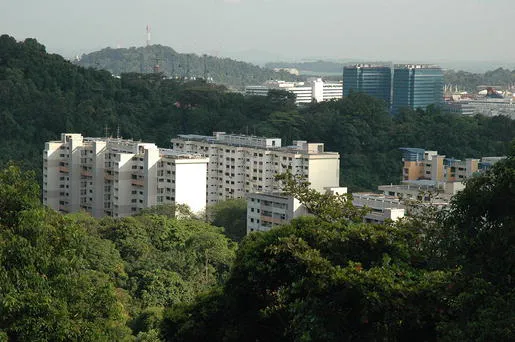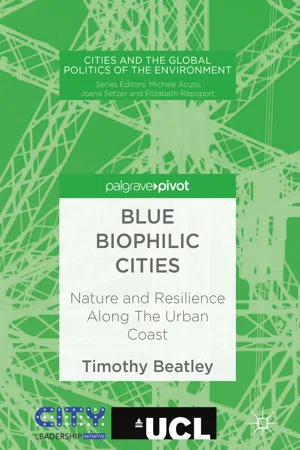A recent st ory in The Economist declares in its opening senten ce: “Earth poorly named.”1 It ought to be called the water planet, or just blue. More than two-thirds of the surface of the planet—a vast area of the planet’s living space—is water, so we have named it poorly indeed. Much of our experience as a species has been in the terretrial realm, where we have lived and evolved, so perhaps it is understandable that we have taken a blinds eye. Our expectation of the oceans has been for them to perpetually offer up a bounty of seafood, to serve as receptacles for human pollutants of many kinds, and act as transport highways, connecting cities and settlements throughout the world, linking cultures and economies.
These same qualities of invisibility, or “ocean blindness” as The Economist calls it, are what largely explain why oceans today are in such trouble. We have difficulty seeing the ramifications of the many ocean degradations we have wrought and their long term cumulative effects (though this is becoming increasingly evident). Out of sight, out of mind—though marine health and marine life may be nearer to urban residents than we think (and potentially much more “seeable” and “knowable,” this book will argue).
Just as we are the blue planet so too are we increasingly the urban planet. As a city planner this does my heart good, and while cities today face a range of problems and challenges, many believe they represent the best hope for improving the quality of human life and expanding economic and social opportunity. As we seek to create a more sustainable world, cities must increasingly be a key element, perhaps the key element in such strategies. We argue increasingly for the need for denser, more compact cities, where it is possible to walk everywhere, reducing dependence on automobiles. We seek to develop more sustainable ways to feed and house urban populations and we invite more sustainable forms of infrastructure, including bikes paths, public transport and renewable energy.
The goal of creating more dense, compact cities in turn raises a question of the role of nature in urban life. Can we design and build more sustainable places in ways that maintain, indeed foster, new connections with the natural world. At the core of this goal is a belief (a key one that I hold, which will be explored in the pages that follow) that we need nature in our lives. We need to have daily, indeed hourly contact with nature. Nature is not something optional, but absolutely essential to leading happy, healthy and meaningful lives.
At an intuitive level many of us appreciate the positive benefits of nature. A stroll in the woods, or time spent tending a garden deliver clear and visceral improvements in mood, in reducing stress and in inducing more creativity. Evidence has been mounting showing that contact with nature has substantial mental health benefits and is a potent antidote to chronic stress.2 We also know there are many other benefits—evidence from psychology suggests that we are more likely to be generous in the presence of nature, more likely to cooperate and more likely to think longer term.
Rachel Carson wrote eloquently about the importance of wonder in our lives, and here nature is uniquely suited to it. In her influential essay (later published as a book) she hoped for every child to have an indestructible sense of wonder “as an unfailing antidote against the boredom and disenchantments of later years, the sterile preoccupation with things that are artificial, the alienation from the sources of our strength.”3 For Carson , the marine edge was an especially potent and powerful place for stimulating this wonder, and for sharing it with others, in beautiful books such as The Sea Around Us .4
In the terrestrial realm we are privileged that enjoying nature can take many forms, such as watching birds and listening to their songs, walking in an urban forest, planting and tending a garden, perhaps in one’s front or back yard, or balcony if one lives in a high-rise building. But there are also many forms of marine nature nearby that we must begin to better recognize as opportunities for biophilic connection and that is one of the key messages here. Much of marine nature is mysterious and difficult to see because it is inaccessible, under water, far away. But in coastal cities around the USA and the world, New York to San Francisco, from Seattle to Rotterdam, from Singapore to Perth, urban populations have remarkable amounts of blue nature, remarkable amounts of blue wildness nearby. Such marine nature must be seen through the lens of biophilia, and cities on the coastal or marine edge understood as blue biophilic cities.
E.O. Wilson , Harvard University biologist, entomologist and conservationist, deserves much of the credit for introducing the concept of biophilia, first to the environmental and conservation community, then more generally to broader society. Biophilia refers essentially to the innate connection we have with nature, our innate affiliation and emotional bonds with the natural world. We have co-evolved with nature, biophilia says, so it is not at all surprising that we tend to be more at ease, happier and more creative when we are surrounded by nature.
What are Biophilic Cities? They are cities that are nature-rich or nature-abundant, of course—cities with extensive numbers of trees and amounts of greenery, where wildlife is welcomed in, where neighborhoods make it easy to spend time outside. These are cities frequently described with reference to their natural qualities—cities that have achieved a high percentage of tree canopy cover, for instance, or a high percentage of residents living in close proximity to a park or greenspace.
In 2013 we launched a new global
Biophilic Cities Network in an effort to connect cites putting nature at the center of their design and planning, sharing stories, comparing notes about effective tools and helping to inspire each other and to advance the global biophilic cities movement (Figs.
1.1 and
1.2).
5 A number of cities in the network, notably Singapore and Wellington, have done much to study, raise awareness about, and conserve and protect marine environments around them. They are inspiring stories, to be sure, but they are only emerging examples of Blue Biophilic Cities. There is much more to do and many more ways coastal cities especially can connect with and support the marine realm.
The Blue City is a Biophilic City
How does, or how could, biophilia manifest in a marine or coastal urban context? Blue Biophilic Cities can be described as cities that do not ignore a marine context, but rather celebrate it. They are cities that seek to appreciate marine nature and understand that much of the biodiversity and nature around will be marine.
More specifically, blue cities that are Biophilic Cities—Blue Biophilic Cities—could be described as follows:
cities where residents actively spend time on, near, or underneath the water near and around them, whether boating, sailing, strolling or hiking near the water’s edge, participating in a variety of recreational pursuits and hobbies, from scuba diving and snorkeling to ocean and harbor swimming that bring them in close contact with the marine world and help to shape a sense of connection to the marine environment;
cities that seek to maximize moments of awe and wonder and understand the marine world as a nearby place of immense biodiversity and majesty, recognizing it as a source of opportunities for urban experiences that soften, uplift and deliver joy;
cities that view nature and ecology holistically, that put marine life at the core of their view of the natural world in which they sit;
cities that actively connect residents to the marine world and that embrace a sense of caring for and protecting marine life;
cities that attempt to reduce individual and collective consumption that negatively impacts the marine world, both near and far. Blue Biophilic Cities understand they are duty-bound to take steps to reduce the size of their ecological footprint on the world’s oceans. There is an ethical duty to reduce the ecological impact but also an affirmative responsibility to do what is possible to actively conserve and protect the marine world. Blue Biophilic Cities establish marine protected areas where it is possible locally and do what they can to assume active leadership and support for larger reserves, including those potentially hundreds or even thousands of miles away;
cities that work to include marine education in schools and that seek to educate all citizens about marine life and the threats and pressures currently being experienced. Achieving a basic (and even advanced) level of marine literacy is an important goal in all Blue Biophilic Cities.
It might also be said that these cities seek to shape a connection to marine nature that is “whole of life.” That is, a connection that begins at an early age, runs through childhood and extends into adulthood and into one’s senior years. It is a love of the marine realm that is long-lasting, deep and fairly continuous. Richard Louv has written compellingly about the ways that children today grow up disconnected from nature—time spent outside in nature replaced with screen time, an inability to recognize common species of flora and fauna, parental worries about safety and a shift away from teaching natural history, among the many causes.6 In Biophilic Cities exposure to and learning about nature starts at an early age and continues throughout life. Schools include hands-on outdoor learning and integrate nature into their curricula at every stage. And these opportunities continue in later years as we increasingly recognize the benefits and meaning nature takes on. Opportunities to engage in blue nature, it is argued here, ought similarly to be available throughout one’s life.
It is important to recognize the role of the b...


